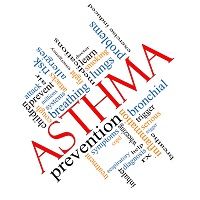Article
Poverty Is Independent Risk Factor in Asthma
Author(s):
The poor continue to get more asthma and are far less likely to get successful treatment, a new study found.

The poor continue to get more asthma and are far less likely to get successful treatment, a new study found. A second study looked at the impact of food allergies on lower income patients.
Researchers presenting at the annual meeting of the American Academy of Allergy, Asthma, & Immunology this week in Los Angeles, CA called for a renewed focus on the role disparities play in population health. The cited connections between income and outcomes in common conditions like asthma and food allergies.
In a new survey of participants from an earlier AsthmaNet trial results showed lower income asthma patients faced a more challenging course that often resulted in less successful treatment.
“We found that patients who have asthma and come from lower income households — making less than $50,000 every year – are one and a half times more likely to see treatment fail; they are also almost twice as likely to have an asthma exacerbation” said Juan Carlos Cardet of Brigham and Women’s Hospital Boston, Massachusetts.
The team identified lower income as a risk factor independent of race, indicated stress level, or level of education.
A second study of data collected from 1,623 caregivers of children with food allergies was sponsored by Food Allergy & Research Education advocacy group FARE, and showed a similar negative impact of socioeconomic pressures..
Emergency department and hospitalization costs were two and a half times more for survey respondents on the lowest income levels.
Lead author Ruchi Gupta, of Northwestern University’s Feinberg School of Medicine in Chicago, IL described some of the short cuts taken by cash-strapped families: “The first line of treatment for anaphylaxis is epinephrine, but costs can be a barrier for many families. Some patients may keep expired auto injectors or cannot afford to fill their prescription in the first place”.
James R. Baker, Jr chief medical officer of FARE points to wider implications: “The data show the remarkable direct and out-of-pocket costs related to food allergies which families have to bear. This reinforces that food allergies are an important economic issue as well as a medical problem.”




